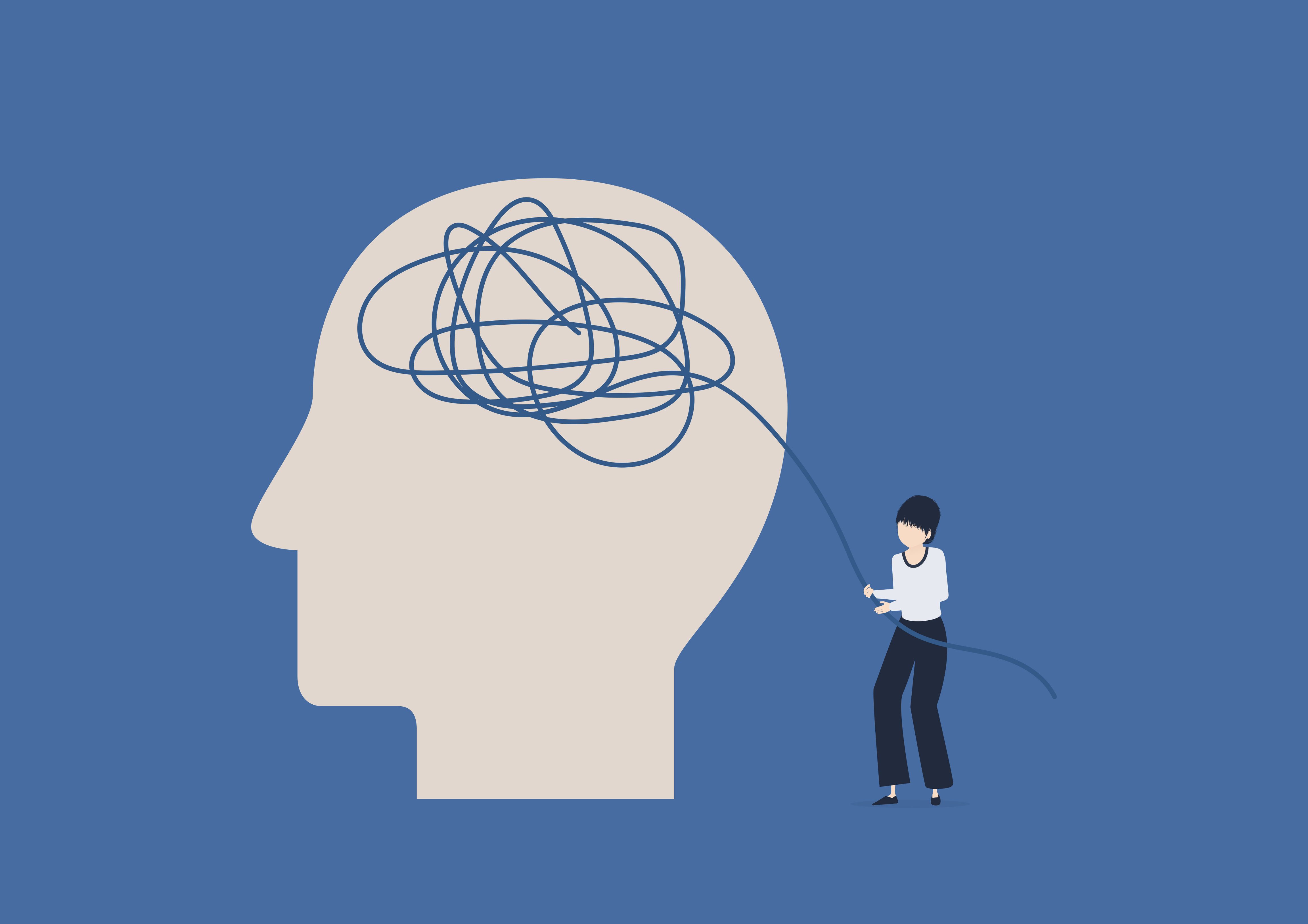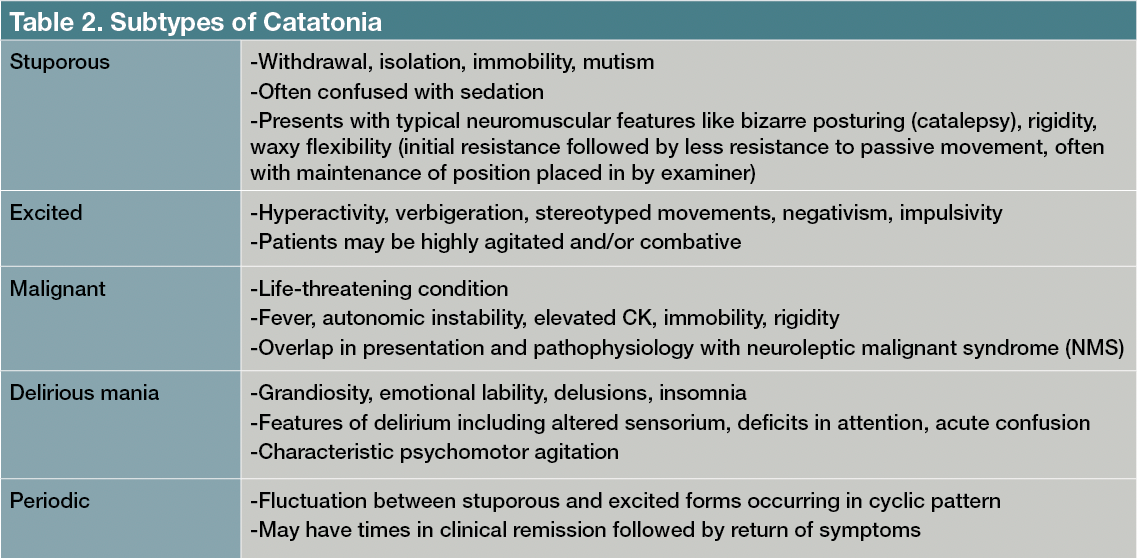The Many Faces of Catatonia, An Under-Recognized Clinical Syndrome
Catatonia: learn more about how to best diagnose early.
mayucolor/AdobeStock

TALES FROM THE CLINIC
In this instalment of Tales From the Clinic: The Art of Psychiatry, we discuss catatonia, originally described by Karl Kahlbaum, a German psychiatrist. At the time, and as we still understand it now, catatonia was described as a diagnostic label that combines different clinical presentations and often presents as an add-on to other psychiatric or medical illnesses. Catatonic symptoms range from motoric immobility and mutism to purposeless excitement, which makes diagnosis challenging. Our understanding of the neurobiology and physiological underpinnings of this disease is woefully incomplete, and we hope this installment helps shed light on catatonia and enhance the readers’ attention to early diagnosis of this intriguing entity.
Case Study
“Mr Shear” is a 40-year-old male patient seen by the general hospital psychiatric consultation service after being admitted for abdominal pain, laboratory derangements, and failure to thrive. His chart mentions history of childhood physical abuse as well as military sexual trauma while serving in the Army during his early 20s. After an honorable discharge from the Army, he suffered a traumatic brain injury after a serious motorcycle accident. Following a lengthy hospitalization and subsequent rehabilitation, he worked as a janitor in an office complex, and was noted for his impeccable attention to detail and perfect attendance. He lived with a girlfriend in his early 30s, and had 2 children with her, until his behavior started becoming more erratic at around the time of his 35th birthday. He began disappearing from the home for increasingly lengthy periods and reported auditory of hallucinations of music and “babies crying.” He became more withdrawn and started missing work, leading to his termination from work as a janitor. Abruptly one day, he left home and did not return. His girlfriend dropped off their 2 children with Mr Shear’s mother, and left town as well.
Four years later, his mother received a call from Mr Shear. He had been staying with a friend from high school for unknown reason, and now that the friend had been diagnosed with Huntington’s disease, he could no longer stay with him and needed to return home. Since arriving back home, his mother reported that “he is like a different person.” Once a highly attentive father, he nearly completely ignored his young children, and spent most of his time watching TV or on his phone. Over the past 6 months, his behavior became even more withdrawn, so that he was no longer watching TV but just sitting and staring. He refused to bathe or use the restroom, often urinating and defecating on himself. When he did get up to use the restroom after multiple requests by his mother, he would spend increasingly long periods of time in the bathroom, and a few weeks before admission, he spent nearly 3 days locked in the bathroom. He stopped eating and drinking, citing abdominal pain, and spoke only in 1-to-3-word sentences. His mother eventually called 911 after he became unresponsive after not eating anything for 1 week.
Upon arrival to the ED, he was found to be hypothermic with hypernatremia, leukocytosis, rhabdomyolysis, and an AKI. He was warmed and resuscitated with IV fluids and then admitted to the general hospital floor, where his electrolytes were slowly corrected. An EGD was performed, and he was diagnosed with gastric ulcers and H. pylori and started on triple antibiotic therapy. Throughout this treatment and workup, he remained minimally responsive. The psychiatric consultation service noted immobility, staring, and mutism, though he did not show signs of posturing or rigidity suggestive of catatonia.
Despite low clinical suspicion for catatonia, a 2 mg IV lorazepam trial was nevertheless attempted, to which he demonstrated remarkable improvement in length of speech, engagement, and responsiveness. He was able to express that he was still having considerable abdominal pain, at which time pain medication regimen was optimized by the pain medicine service. He underwent daily assessments by the psychiatry service and was noted to be more withdrawn when IV lorazepam had to be delayed due to receiving coinciding opioid pain medications or due to a staffing shortage. He was started on a regimen of IV lorazepam 4 times daily, which was successfully transitioned to PO formulation. On lorazepam, he was noted to start using the restroom independently, expressing his needs, eating and drinking appropriately, and having brief conversations with his medical teams. Due to concerns about caregiver burnout from frequent dosing of lorazepam, he was transitioned to PO diazepam twice daily. At outpatient psychiatric follow up several weeks after discharge from the hospital, he was noted to maintain the improvements in his speech and behavior and began slow taper off diazepam under psychiatrist supervision.
Definition
Catatonia is a distinct syndrome marked by a heterogenous constellation of hallmark signs and symptoms. It is associated with both psychiatric etiologies, known as primary catatonia, as well as with other neuromedical conditions, or secondary catatonia.1 Catatonia was first described by Karl Kahlbaum in 1874, and unfortunately it was nosologically associated primary with schizophrenia syndromes until as recently as the 1990s.2,3 We now know that, among primary psychiatric causes of catatonia, mood disorders such as bipolar disorder and major depressive disorder are much more commonly associated. In general, catatonia is associated with a primary psychiatric etiology in about 75% of cases, and with secondary causes in about 25%.4 In the DSM-5, catatonia is a specifier for psychosis and mood disorders.
Symptoms and Diagnosis
Table 1. Characteristic Signs and Symptoms of Catatonia

On inpatient psychiatric consultation services, catatonia is most commonly diagnosed using the Bush-Francis Catatonia Rating Scale, although several other diagnostic scales exist. Characteristic signs and symptoms are specifically defined and can be found in Table 1. The exact number of positive diagnostic features needed to diagnose catatonia is controversial, with the Bush-Francis requiring 2 of 14 “screening” symptoms, while the DSM-5 requires 3 of 12 symptoms. At any rate, catatonia is thought to be significantly underrecognized, and it is important to routinely screen for it among hospitalized patients.5
Etiologies
Causes of secondary catatonia are broad and include both direct CNS insults as well as systemic conditions. Common causes include stroke, seizures, CNS lesions, infections, and systemic lupus erythematosus. Limbic encephalitis can also be responsible, with anti-NMDA receptor encephalitis being the most common form associated with catatonia.6 Other causes may include endocrinopathies, metabolic disorders, poisoning, or drug-related causes. Notably dopamine antagonists such as antipsychotic medications may cause catatonia, although low potency antipsychotics are sometimes used in specific cases of catatonia associated with psychotic conditions. Drugs of abuse, including hallucinogens, stimulants, alcohol, and synthetic cannabinoids, as well as withdrawal of GABA or dopamine agonists have also been implicated.
It is important to complete a thorough neuromedical workup when catatonia is suspected to evaluate for a secondary cause. This might include a metabolic panel, toxicology screen, infectious screen, autoimmune screen (erythrocyte sedimentation rate, C-reactive protein, anti-nuclear antibodies, paraneoplastic panel), creatinine phosphokinase (CPK) levels (to monitor for malignant form), iron studies, EEG, Head CT or MRI, and possibly a lumbar puncture.4,7-10
Table 2. Subtypes of Catatonia

Catatonia Subtypes
Various subtypes of catatonia have been described, including the classic stuporous catatonia, excited catatonia, delirious mania, and the potentially life-threatening lethal or malignant catatonia (see Table 2). In the stuporous form, patients demonstrate severe withdrawal, immobility, and mutism, and inpatient services may have a hard time distinguishing between catatonic withdrawal and sedation. In contrast, the excited subtype is characterized by hyperactivity, with verbigeration, stereotyped movements, negativism, or impulsivity. Malignant catatonia, a psychiatric emergency, is marked by fever, autonomic instability, and elevated creatinine kinase.11 Delirious mania is a specific form of excited catatonia that also overlaps with malignant catatonia, marked by features of mania (grandiosity, emotional lability, delusions, insomnia), altered arousal suggestive of delirium, and autonomic instability.4,10
Treatment
The mainstays of treatment for catatonia involve pharmacologic treatment as well as supportive care to manage the physical complications associated with immobility and poor oral intake. The initial approach to nonmalignant forms of catatonia involves a challenge of 2 mg of IV lorazepam. If IV access is not available, an IM route can be used, though this is not preferred given risks of iatrogenic harm. Though less effective than parenteral forms, sublingual lorazepam is also available and is more effective than the oral form. A positive response to the lorazepam challenge is often quickly apparent, with marked improvement in motor and speech symptoms within several minutes. In some cases, a more diminished improvement may be seen over a longer period, such as 30 to 120 minutes. Although sedation with benzodiazepines is decreased in catatonia, falling asleep after a lorazepam challenge does not necessarily rule out the syndrome. Similarly, a negative challenge does not rule it out in case with high clinical suspicion.
ECT is used in cases that fail to respond adequately to benzodiazepines or in malignant catatonia, and delays in administration of ECT in malignant catatonia is associated with increased mortality. Amantadine, memantine, zolpidem, and topiramate have also been used in cases that do not respond fully to benzodiazepines.4,7,10
Dr Vijayvargiya is an assistant professor in the department of psychiatry at the UF College of Medicine.
References
1. Taylor M. Catatonia: a review of a behavioral neurologic syndrome. Cogn Behav Neurol. 1990;3(1):48-72.
2. Fink MT, Taylor MA. Catatonia: a separate category in DSM-IV? Integr Psychiatr. 1991;7(1):2-10.
3. Kahlbaum K. Catatonia. Johns Hopkins University Press; 1973.
4. Hebert C. Psychosis III: Catatonia. American Physician Institute for Advanced Professional Studies; 2022.
5. Sienaert P, Rooseleer J, De Fruyt J. Measuring catatonia: a systematic review of rating scales. J Affect Disord. 2011;135(1-3):1-9.
6. Ali SW, Welch CA, Park LT, et al. Encephalitis and catatonia treated with ECT. Cogn Behav Neurol. 2008;21(1):46-51.
7. Beach SR, Gomez-Bernal F, Huffman JC, Fricchione GL. Alternative treatment strategies for catatonia: a systematic review. Gen Hosp Psychiatry. 2017;48:1-19.
8. Bey T, Patel A. Phencyclidine intoxication and adverse effects: a clinical and pharmacological review of an illicit drug. Cal J Emerg Med. 2007;8(1):9-14.
9. Espi Forcen F, Respino M, Eloge J, et al. Catatonia in the medically ill: differences and parallels in etiology, phenomenology and management. Int J Psychiatry Med. 2022;57(1):80-88.
10. Fricchione GBS, Gross A, Huffman J, et al. Catatonia, neuroleptic malignant syndrome, and serotonin syndrome. In: Massachusetts General Hospital Handbook of General Hospital Psychiatry. Elsevier; 2018:253-261.
11. Desai S, Hirachan T, Toma A, Gerolemou A. Malignant catatonia versus neuroleptic malignant syndrome. Cureus. 2021;13(6):e15818.
